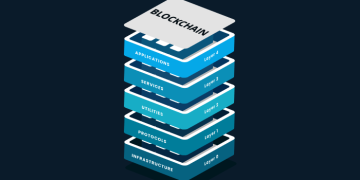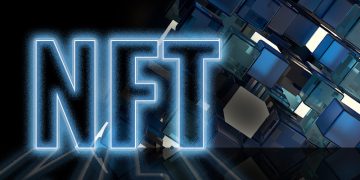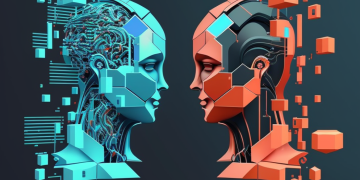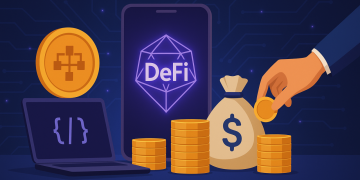In the digital age, data privacy has become one of the most pressing concerns for individuals, businesses, and governments. With data breaches, unauthorized access, and misuse of personal information becoming increasingly common, it is crucial to explore innovative technologies that can enhance data protection. Blockchain technology, with its decentralized nature and robust security features, presents a potential game-changer in the way we approach data privacy.
In this article, we will explore how blockchain can be utilized for data privacy protection, its advantages, challenges, and real-world applications. Let’s dive into the mechanisms that allow blockchain to play such a critical role in safeguarding our data.
1. Understanding Blockchain’s Role in Data Privacy
Blockchain is essentially a decentralized, distributed ledger that records transactions across multiple computers in a way that ensures the data cannot be altered retroactively. Each record, or “block,” contains information that is cryptographically linked to the previous one, forming a chain. This structure inherently ensures data integrity, making it difficult to tamper with or manipulate records once they are recorded on the blockchain.
Given these characteristics, blockchain presents several advantages for data privacy protection:
- Decentralization: No single entity owns or controls the data, making it harder for any malicious actor to access or tamper with it.
- Immutability: Once data is recorded on a blockchain, it cannot be altered or deleted, ensuring the integrity and permanence of personal information.
- Transparency and Auditability: Blockchain allows for transparent tracking of data without compromising the privacy of individuals. It can be used to create a trustless environment where users can independently verify transactions and data exchanges.
2. How Blockchain Ensures Data Privacy
While blockchain enhances data security and integrity, it can also provide several features specifically designed to protect user privacy. Let’s look at how blockchain can be implemented to safeguard data privacy:
a) Decentralized Identity Management
Traditional identity management systems often rely on centralized authorities, such as banks, government agencies, or corporations, to store personal data like names, addresses, and credit histories. These centralized systems are vulnerable to breaches, unauthorized access, and misuse of sensitive data.
Blockchain Solution:
Blockchain-based self-sovereign identities (SSI) allow individuals to have full control over their personal information. Instead of storing personal data on a centralized server, blockchain stores only essential, encrypted identity attributes on the blockchain.
- Example: Platforms like Sovrin and uPort use blockchain to allow individuals to control their own identity data, making it easier to share only necessary pieces of information with third parties, without disclosing everything at once.
Benefits:
- Users maintain control over their personal data and can selectively share it with service providers.
- Eliminates the need for storing sensitive data on centralized servers, reducing the risk of hacking and identity theft.
b) Data Encryption and Privacy Preservation
Blockchain ensures data privacy through advanced cryptographic encryption. Transactions recorded on a public blockchain are typically hashed (encrypted) using a public-private key pair, ensuring that sensitive information is not exposed.
Blockchain Solution:
While the blockchain ledger itself can be transparent, data stored on the blockchain can remain private and secure through the use of encryption techniques, such as zero-knowledge proofs (ZKPs). ZKPs allow one party to prove to another that a statement is true without revealing any additional information.
- Example: Zcash, a cryptocurrency, uses zero-knowledge proofs to allow users to make private transactions that reveal no information about the sender, receiver, or transaction amount on the blockchain.
Benefits:
- Personal information or transaction data can be shared without revealing the underlying details.
- Zero-knowledge proofs offer an effective way to validate data without compromising privacy.
c) Access Control and Permissioned Blockchains
In many traditional systems, data access control is centralized, often granting a small number of administrators full access to sensitive information. This centralized model can create vulnerabilities, especially when user data is stored on a single server or database.
Blockchain Solution:
A blockchain system can use permissioned blockchains to provide granular access control to users. In such systems, only authorized participants can access or make changes to certain data, based on pre-set permissions encoded in smart contracts.
- Example: In the healthcare industry, MedRec, a blockchain-based medical record system, allows patients to control who has access to their medical records. Through smart contracts, patients can give consent to specific medical providers to view or update their data.
Benefits:
- Ensures that only authorized parties can access specific pieces of sensitive data.
- Reduces the likelihood of data exposure through unauthorized access.
d) Secure Data Sharing and Storage
Traditional data storage solutions, especially cloud-based storage, rely on central servers that are vulnerable to hacking, data breaches, and unauthorized access. Storing personal data centrally increases the risk of large-scale data leaks, where millions of individuals’ personal information can be exposed.
Blockchain Solution:
Blockchain allows for distributed file storage and data sharing, ensuring that data is not stored in a single location. Blockchain-based systems like IPFS (InterPlanetary File System) and Filecoin allow files to be stored across a decentralized network, making it more secure and less prone to attack.
- Example: Decentralized storage platforms like Storj and Filecoin store data across multiple nodes in a network, ensuring that no single point of failure exists.
Benefits:
- Files are fragmented and stored across the network, reducing the likelihood of a data breach.
- Offers greater security by eliminating central storage servers that are prone to hacking.
3. Blockchain’s Impact on the Regulatory Landscape
As governments around the world introduce increasingly stringent regulations regarding data privacy (e.g., GDPR in the European Union), blockchain can play a significant role in ensuring compliance. Blockchain’s transparency and immutability provide clear records of who has accessed, modified, or shared data, enabling organizations to meet regulatory requirements such as audit trails and data consent records.
Blockchain Solution:
Blockchain can be used to provide an immutable audit trail of all data access and transactions, making it easier to demonstrate compliance with privacy laws and regulations. For instance, GDPR requires companies to provide data subjects with the right to access their personal data, as well as the right to have it erased (“right to be forgotten”).
- Example: Blockchain can provide users with transparent, real-time access to who is storing or processing their data, ensuring compliance with privacy regulations.
Benefits:
- Enhances the ability to comply with privacy laws by maintaining an immutable, transparent record of all data interactions.
- Provides better control and visibility for users over their own data, helping businesses to manage data privacy concerns more effectively.

4. Challenges in Using Blockchain for Data Privacy Protection
While blockchain offers tremendous potential for improving data privacy, there are several challenges that must be addressed:
a) Data Immutability vs. Right to Be Forgotten
Blockchain’s core feature is its immutability—once data is recorded, it cannot be deleted or altered. This presents a challenge in regions where privacy regulations, such as GDPR, grant individuals the “right to be forgotten.” On a blockchain, it is difficult, if not impossible, to erase data once it’s been recorded.
- Solution: Developers can use techniques like off-chain storage (storing data off the blockchain and only referencing it on-chain) or allow for encrypted data that can be rendered unreadable if necessary.
b) Scalability and Efficiency
Blockchain networks, particularly public blockchains, often face challenges in terms of scalability and transaction speed. Storing personal data on the blockchain can lead to inefficiencies, especially when handling large volumes of sensitive data.
- Solution: Layer-2 scaling solutions and more efficient consensus mechanisms are being developed to improve blockchain scalability without compromising data privacy.
c) Complexity and Adoption Barriers
The adoption of blockchain-based data privacy solutions requires technical expertise and infrastructure changes, which can be a barrier for businesses or individuals unfamiliar with blockchain technology.
- Solution: As blockchain adoption grows and becomes more user-friendly, companies and individuals will likely have access to more straightforward tools for implementing decentralized data privacy solutions.
5. Real-World Applications of Blockchain for Data Privacy
Blockchain technology is already being applied in several industries to enhance data privacy:
- Healthcare: Blockchain allows patients to control who has access to their health data and provides a secure, tamper-proof record of medical records.
- Finance: Decentralized finance (DeFi) platforms use blockchain to offer privacy-centric financial services, ensuring that users maintain control over their financial information.
- Social Media: Decentralized social media platforms like Steemit and Minds give users control over their data, offering an alternative to traditional platforms that monetize user information.
6. Conclusion
Blockchain technology holds significant promise for enhancing data privacy protection by offering features like decentralized identity management, cryptographic encryption, and secure data sharing. By allowing users to have more control over their data and eliminating the need for centralized authorities, blockchain can potentially mitigate the risks of data breaches, unauthorized access, and misuse of personal information.
However, for blockchain to truly revolutionize data privacy, it must address challenges related to regulatory compliance, scalability, and the right to be forgotten. As technology evolves, these hurdles are likely to be overcome, positioning blockchain as a cornerstone of data privacy solutions in the future.
As we continue to see advancements in blockchain technology, industries from healthcare to finance to social media can expect to benefit from the enhanced security, transparency, and privacy** that blockchain offers, creating a safer and more secure digital environment for all.

















































